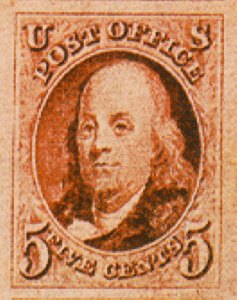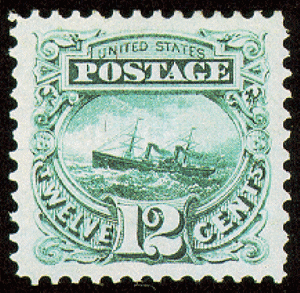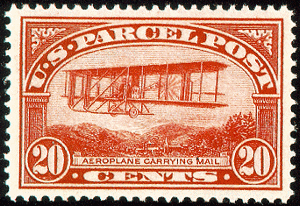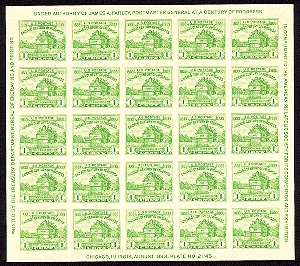Stamps. Some people collect them, you always need one when you can’t find one, and they ensure that your mail gets from point A to point B. These tiny squares have been a part of our country’s postage history for quite a while. Initially, stamps were not required to send letters, and costs of shipment were collected when the letter was received. Different parts of the country followed different regulations and this disorganization did nothing but create problems. They became a required part of the mailing process in 1855, and it was around that time that stamps became more standardized. Here are a few of the different kinds of stamps our country has seen over the past 150+ years:

Image from U.S. Stamp Gallery
1.
(1847) This depiction of one of the founding fathers is on one of the oldest stamps used by the USPS. Benjamin Franklin is widely recognized as one of the most influential people in American history, so it would make sense to honor him in stamp form. At the time, affixing this postage onto your letter established you’d paid the 5 cents necessary for it to travel without needing to pay to receive it.

Image from U.S. Stamp Gallery
2.
(1869) The S.S. Adriatic was one of the first stamps to show anything other than former leaders of the country. These stamps were square and had a lot of different designs on them. Some depicted scenes like Columbus’ landing in the new world, others showed signs of innovation like a locomotive, and historical events like the signing of the Declaration of Independence.

Image from U.S. Stamp Gallery
3.
(1888) These special delivery stamps were used to ensure swift delivery at most times of the day.This service was initially only implemented in 555 post offices, but with the ever expanding nature of the postal service, so too was the use of special delivery stamps. These wider stamps made it quick and easy to recognize what kind of mail the offices were dealing with.

Image from U.S. Stamp Gallery
4.
(1913) This stamp depicting an “Aeroplane Carrying Mail” was used for packages and parcels going longer distance, thus the 20-cent cost. This is also the first time an airplane was shown on US postage.

Image from U.S. Stamp Gallery
5.
(1933) As a part of the American Philatelic Society’s convention in Chicago, this sheet—and others—were sold. While this was primarily for collectors, they could potentially be used for post. Each stamp had a postage value of 1 cent, meaning that you could reasonably attach the whole sheet to a package at once instead of affixing each one individually. This was slightly more difficult as these stamps did not have any sticky substances on the back, requiring a little more effort on the sender’s part.

Image from U.S. Stamp Gallery
6.
(1981) Jumping ahead about 50 years, this colorful stamp represented the scientific achievements of the United States. This particular series had images of space exploration with tag lines such as “Benefiting Mankind” and “Understanding the Sun.” Here, we have the Columbia Space Shuttle deploying Spacelab.
What Is A Forever Stamp?
The use of “Forever Stamps” for actual mail is becoming the standard. These Forever Stamps maintained value no matter how much time had passed since their purchase. This can take the guesswork out of matching up stamp values for postage, but makes them largely pointless for collectors.
What Does The Future Hold?
The creation of new stamps is always moving forward. Pop-culture icons, newly historical events, and more can be found on stamps. In addition, these new graphic stamps look better than ever before. Improved printing techniques and more durable materials mean that those stamps recently collected will hold up better over time. This move seems to be intended to help boost funding for the USPS.
When you go to send your mailers through the USPS, things can be complicated. Instead of sending a letter here or there, you’re sending hundreds, maybe thousands. For that kind of bulk, it’s always a good idea to go with a professional service that knows all of the tricks of the trade.



